The Constructivist art movement, rooted in the early 20th century, brought forth a revolutionary approach to artistic creation, emphasising abstraction, geometry, and a commitment to merging art with everyday life. Within this dynamic movement, several artists created masterpieces that not only echoed the principles of Constructivism but also contributed to the movement’s evolution.
What type of art was created during the Constructivist art movement?
Print art, photographic manipulation, ink and paintings were made during the Constructivism Art Movement.
Constructivism art was created and popular during which years?
The constructivist art movement was popular from 1913 to the 1920s
Where was Constructivism art made and popularised?
The Constructivist movement began in Russia
Who are some famous Constructivist artists and artworks?
Attentive Worker by Kazimir Malevich

Letatlin by Vladimir Tatlin
Constructivo en Gris y Negro con Centro Rojo by Joaquín Torres-García
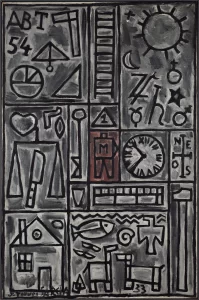
Interesting observations about Constructivism – Art Op-Ed
Just like you can’t surf the web without the internet, you can’t discuss the essence of Constructivism without mentioning Suprematism. While Suprematism and Constructivism seem to have similar visual aesthetics, they are, nevertheless, vastly different.
Constructivism is where the artist uses elements to create utility and make a sensible composition. Kind of like Graphic Designers use design elements to effectively convey information. On the other hand, Suprematism has the opposing ideology of lacking any ideological or philosophical statement by lacking utility. The focus of Suprematism is expressing emotion and the focus of Constructivism is constructing a message. Constructivism took the abstraction of Supremacism one step further and created, as Lissitzky said, “interchange station between painting and architecture.”
Which art movement(s) came before the Constructivist art movement?
Cubism, Suprematism and Futurism were art movements that came before or during the Constructivism art movement.
Which art movement(s) came after the Constructivist art movement?
The Bauhaus Art Movement came after the Constructivist Art Movement
Top 9 Artworks in the Constructivism Art Movement:
“Figuras a Cinco Colores” by Joaquín Torres-García (1938):
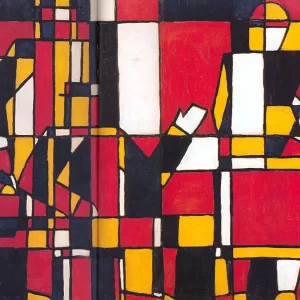
Joaquín Torres-García, a Uruguayan artist, crafted “Figuras a Cinco Colores” as a testament to his exploration of Constructive Universalism. The artwork, with its geometric shapes and precisely arranged colours, reflects Torres-García’s belief in a universal visual language. This piece shows Torres-García’s fascination with ancient art and symbols, influencing his quest for a timeless and universally comprehensible aesthetic.
“Képarchitektúra” by Lajos Kassák (1921):
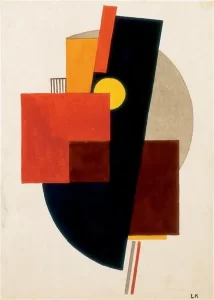
Lajos Kassák, a Hungarian poet and artist, conceived “Képarchitektúra” as a groundbreaking exploration of visual poetry within the Constructivist context. The artwork integrates abstract shapes and text in a dynamic composition, blurring the lines between visual and literary expression. Anecdotes suggest that Kassák aimed to create a synthesis of artistic forms, emphasising the interconnectedness of various art disciplines in the Constructivist vision.
“Letatlin” by Vladimir Tatlin (1929):
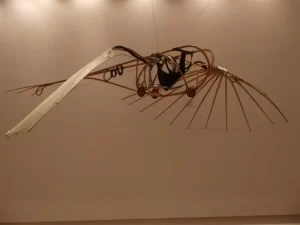
Vladimir Tatlin, known for his towering unrealised monument, ventured into more personal territory with “Letatlin.” This small, bird-shaped artwork reflects Tatlin’s fascination with flight and the bird motif. “Letatlin” implies Tatlin’s poetic inclination, portraying his desire to transcend earthly constraints and his reach for the skies. The piece serves as a poignant departure from Tatlin’s grand architectural ambitions.
“Abstract Art in Five Tones and Complementaries” by Joaquín Torres-García (1930):
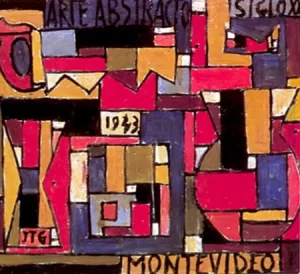
Another masterwork by Joaquín Torres-García, “Abstract Art in Five Tones and Complementaries,” showcases his commitment to Constructive Universalism. This piece highlights Torres-García’s thoughtful approach to colour theory. Each tone and complementary pair is thoughtfully selected, reflecting his belief in the symbolic and universal power of colour. The artwork stands as a testament to Torres-García’s quest for a visual language that transcends cultural boundaries.
“Graphic Tectonic” by Josef Albers (1922):
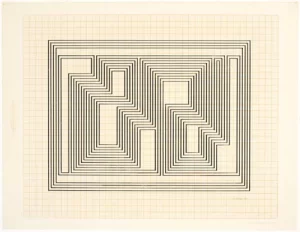
Josef Albers, a prominent figure in the Bauhaus movement and later a key contributor to Constructivism, created “Graphic Tectonic” as an exploration of geometric forms and their spatial relationships. The anecdote reveals Albers’s fascination with the interplay of shapes, inspired by his studies of ancient and non-Western art. “Graphic Tectonic” is a precursor to Albers’s later influential work on colour theory. This artwork, you could say, is like an amalgamation of Constructivism and Bauhaus.
“Constructivo en Triángulo” by Joaquín Torres-García (1931):
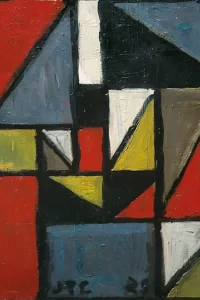
Joaquín Torres-García’s “Constructivo en Triángulo” encapsulates his Constructive Universalist philosophy through a harmonious composition of triangles. This piece delves into Torres-García’s belief in the fundamental nature of geometric forms. Triangles, in particular, held symbolic significance for him, representing balance and unity in the Constructivist worldview.
“Arithmetic Composition” by Theo van Doesburg (1929):
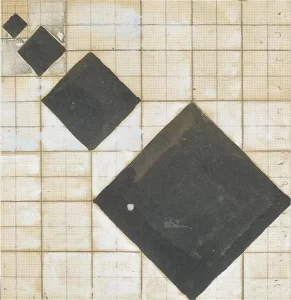
Theo van Doesburg, a Dutch artist and co-founder of the De Stijl movement, experimented with Constructivist techniques with “Arithmetic Composition.” This artwork showcases van Doesburg’s interest in mathematical precision and the application of geometric principles in art. This artistic technique makes “Arithmetic Composition” quintessentially Constructivist.
“Composition of Circles and Overlapping Angles” by Sophie Taeuber-Arp (1930):
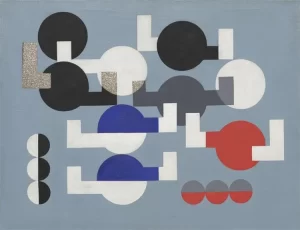
Sophie Taeuber-Arp, a Swiss artist associated with the Dadaism and Constructivist movements, created “Composition of Circles and Overlapping Angles.” This artwork is a manifestation of her geometric abstraction. This artwork reflects Taeuber-Arp’s commitment to the integration of art into daily life. Her exploration of circles and angles demonstrates a balance between precision and playfulness in the Constructivist spirit.
“Skyscrapers on Transparent Yellow” by Josef Albers (1929):
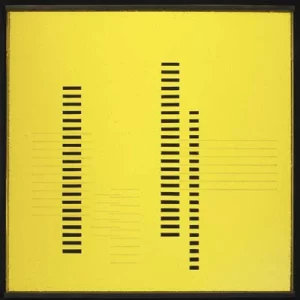
Josef Albers, in “Skyscrapers on Transparent Yellow,” offers a captivating exploration of urban landscapes through Constructivist principles. This artwork shows Albers’s fascination with the dynamic interplay of colour and form. “Skyscrapers on Transparent Yellow” foreshadows Albers’s later influential work on colour theory, showcasing his early experimentation with abstract compositions.
These iconic artworks from the Constructivist movement form a tapestry of innovation, each thread weaving a narrative of artistic exploration, philosophical depth, and a commitment to breaking free from traditional constraints. Whether exploring universal symbols, geometric abstraction, or the integration of art into daily life, these artists left an indelible mark on the trajectory of modern art. These masterpieces not only unveil the artists’ intentions but also offer a glimpse into the transformative spirit of the constructivist art movement. This spirit continues to resonate in art and digital design even today.
*Images from Wiki Commons







0 Comments